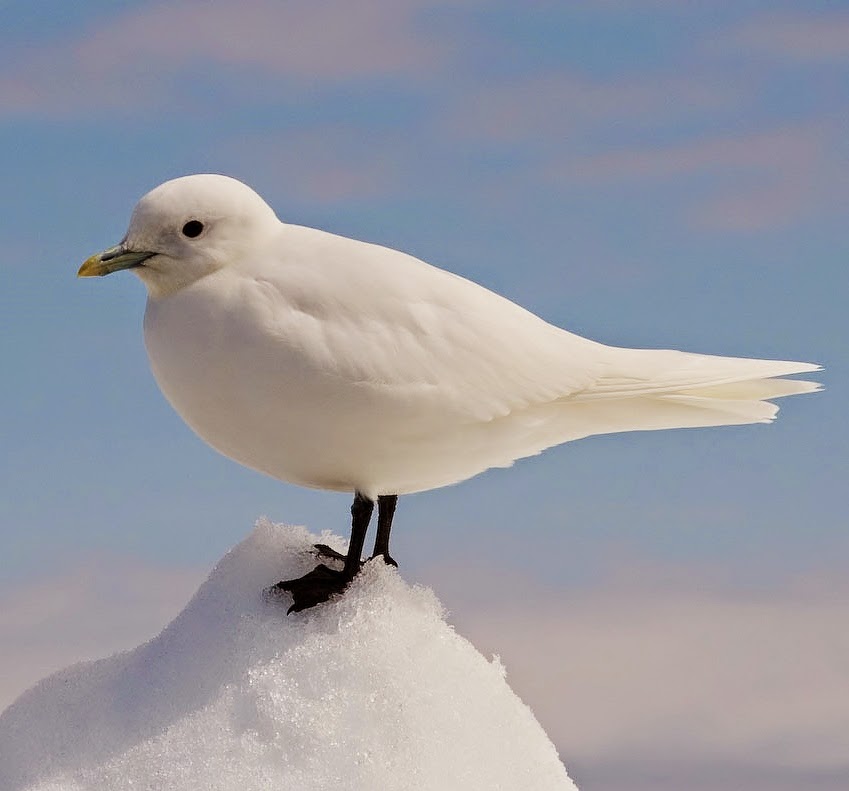 |
| (Photo from Wikipedia) |
Common name:
ivory gull (en); gaivota-marfim (pt); mouette blanche (fr); gaviota marfileña (es); elfenbeinmöwe (de)
Taxonomy:
Order Charadriiformes
Family Laridae
Range:
This species has a circumpolar distribution in the high-Arctic, being found as far south as the Bearing Strait, Alaska and northern Canada, northern Iceland, northern Scandinavia and northern Russia.
Size:
These birds are 40-48 cm long and have a wingspan of 105-120 cm. They weigh 450-700 g.
Habitat:
They breed in rocky islands or on the mainland, in steep and inaccessible cliffs near pack ice, on broken ice-fields or on bare, level shorelines with low rocks. Outside the breeding season they are found along the edges of pack ice or near drift ice.
Diet:
They feed on fish, shrimps, shellfish, algae, carrion such as seal placentas, offal and animal faeces. In winter they are known to swallow large pieces of frozen food.
Breeding:
Ivory gulls breed in June-August. They form small colonies of 5-150 pairs, each nesting in a mound of mosses, dry grass, driftwood, feathers, down, stalks, algae, seaweeds, lichen and dried mud. The nests are placed on cliff ledges, dry stony ridges within a few meters of the ice cap, gently-sloping boulder-strewn mounds, or gravel banks in small streams. The female lay 1-3 dark olive to pale brown eggs with dark spots and blotches, which are incubated by both parents for 24-26 days. The chicks fledge 4-7 weeks after hatching. They reach sexual maturity at 2 years of age.
Conservation:
IUCN status – NT (Near-Threatened)
This species has a large breeding range and a global population estimated at 12.000-18.000 individuals. Population trends are difficult to estimate as colony size fluctuates from year to year, but sustained declines of up to 80% in the last 3 decades have been recorded in Canada. The declining are believed to be due to changes in conditions on its staging or wintering grounds, such as more severe winters and changing sea-ice distribution and thickness, as well as illegal hunting, oiling at sea, disturbance of colonies due to escalating diamond exploration, increased nest predation, and toxic pollutants, such as mercury, PCB and DDT, that bioaccumulate at high trophic levels.







